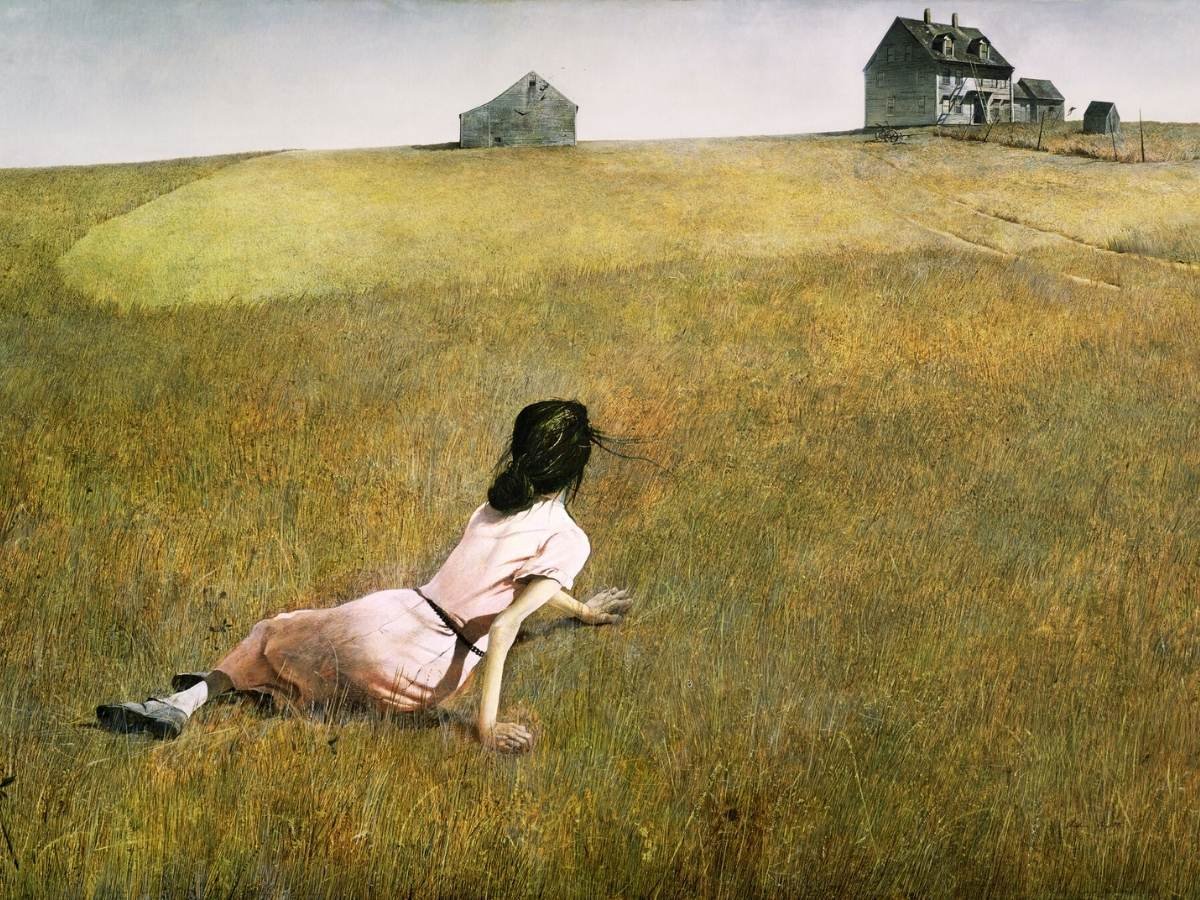New York, Museum of Modern Art
Andrew Wyeth is the fifth child of a well known American illustrator and artist Newell Convers Wyeth who illustrated well loved editions of Treasure Island, Robin Hood and the Last of the Mohicans among many other books. Andrew was a sickly child who was educated at home and his father, to whom he was very close, gave him a secure grounding in draughtsmanship. The subsequent death of his father in 1945 in a tragic accident when a train struck his car at a level crossing had a deep effect on Wyeth, intensifying the melancholic vein already noticeable within his work.
This picture was painted three years after the death of Wyeth senior. A young girl sprawls in a slightly odd pose in the midst of a prairie-like expanse of grassland. She has her back to us and she gazes up a steady incline to a house and a barn which occupy the crest of the hill. A track makes its way from the house and exits the scene to our right; the occupants of the house have erected a desultory fence around a small part of their land and they have mowed some of the grass to create the feeling of an enclosure for the buildings. But apart from this nothing impinges upon the smooth rise of the land and the texture of the grass which covers it. This featureless domain separating girl from house creates a tension which deepens when certain details concerning the young woman who modelled for the girl become apparent.
Christina Olsen lived near to the Wyeth family summer home in Cushing, Maine. She had suffered from poliomyelitis or some other unspecified muscular disorder in infancy because she was paralysed from the waist down – this accounts for the strange pose she has adopted and it also heightens our perception of the physical gulf which she has to overcome if she is to regain the crown of the hill.
It is tempting to make some sort of connection between her physical inability to move far from the environs of her home and the artist’s almost hermetic attachment to the homes in Pennsylvania and Maine where he was brought up and where he has continued to live all his life. He rarely traveled outside these twin personal centres and he drew his inspiration from the people and farms local to his homes.
The feeling that Wyeth is in some way ‘a man apart’ is strengthened by his lifelong use of tempera – the use of egg yolk as a binding medium for the pigment rather than oil. This technique militates against a speedy execution and gives his paintings the fine but ‘dry’ finish that characterises his work. His style and subject-matter remained almost immutable throughout his career – a rock like adherence to figurative painting in the face of the enthusiasm of the American avant-garde for the abstract and the innovative. But the popularity of his work in the United States has never been in doubt (although critical approval has been less than unanimous). His portrayal of a rural America rooted in the past has struck a chord in an increasingly urban – or suburban – country.
Contemporary Works
1947 Henri Matisse: Dahlias and Pomegranates, New York, MOMA
1948 Paul Delvaux: Leda, London, Tate
1949 Mark Rothko: Untitled (Violet, Black, Orange, Yellow on White and Red), New York, Guggenheim Museum
Categories:
- American Twentieth Century Painting

